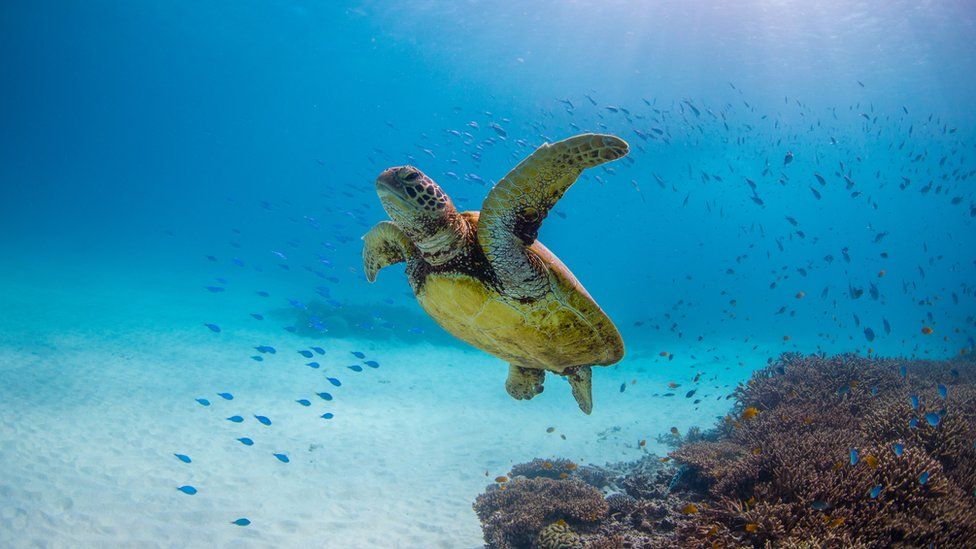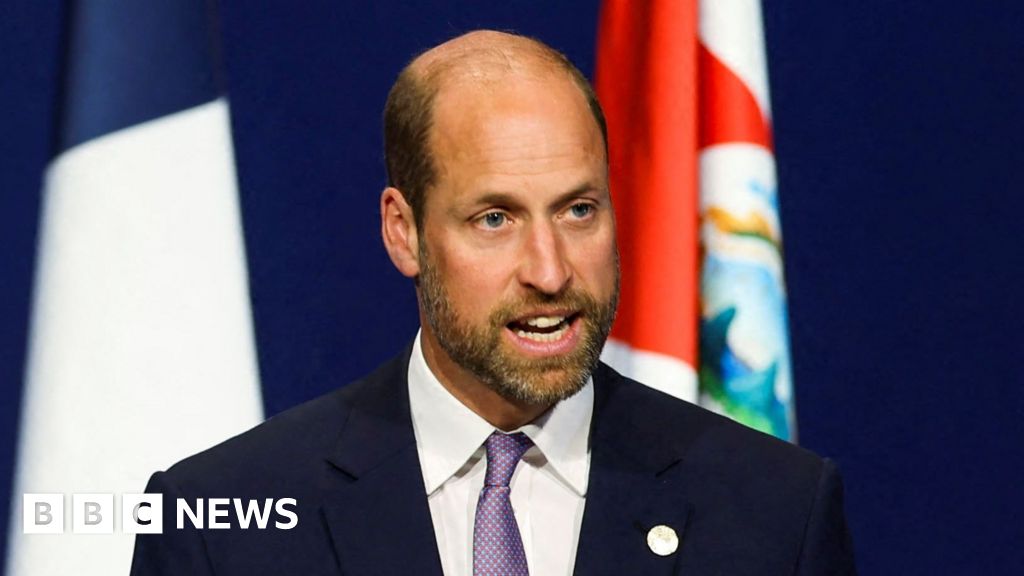ARTICLE AD BOX
 Image source, Getty Images
Image source, Getty Images
Countries are being called on to protect more lands and oceans
By Helen Briggs and Victoria Gill
Science and environment correspondents
It's being called a last chance for nature - 100 countries backing calls to protect 30% of the planet.
The aim is to reach this goal by 2030 and conserve forests and other vital ecosystems in order to restore the natural world.
The "30x30" target is the key ambition of the UN biodiversity summit, COP 15
But as the talks in Montreal, Canada, move into their final days, there is division over this and many other targets.
Biodiversity refers to all living things, from polar bears to plankton, and the way they fit together to sustain life on Earth.
Image source, Getty Images
Image caption,The summit wants agreement on halting and reversing biodiversity loss by 2030
What's wrong and how do we fix it?
Scientists have warned that with forests and grasslands being lost at unprecedented rates and oceans under pressure from pollution and over-fishing, humans are pushing the Earth beyond safe limits. This includes increasing the risk of diseases, like SARs CoV-2, Ebola and HIV, spilling over from wild animals into human populations.
Under the proposed agreement, countries would sign up to targets to expand protected areas, such as nature reserves. It draws inspiration from the so-called "father of biodiversity", the biologist Edward O Wilson, who called for half of Earth to be protected.
But there is debate over how much land and sea to include, and some scientists fear the targets may be diluted.
Image source, Getty Images
Image caption,The last male northern white rhino, Sudan, died in 2018
Designating areas for nature in a way that is meaningful will be a challenge, but it is absolutely required, says Prof Mark Emmerson of Queens University, Belfast.
"Protecting our land and seas also allows degraded ecosystems to recover, to start functioning in a way that is beneficial to society," he says. Maintaining and restoring healthy wetlands and forests - that lock away greenhouse gas emissions - can help humanity deal with the other major global challenge of climate change.
"Healthy ecosystems can lock up carbon and contribute to our climate mitigation targets if we give them the space to do so - in this respect the climate and biodiversity crises are flip sides of the same coin."
Speaking to the BBC at the biodiversity conference, head of the UN Environment Programme Inger Andersen also stressed that the biodiversity agreement "deals explicitly with nature's contribution to the impacts of climate change".
Listening to 'those who protect the land'
Protecting the rights of indigenous peoples has been front and centre at the talks. Canadian Prime Minister Justin Trudeau was drowned out by a protest by a group of young indigenous people during his opening speech. Thousands took to the streets of Montreal on Saturday to call for indigenous voices to be heard.
They occupy some of the most biodiverse areas of the planet - places that it is particularly vital to protect such as the Amazon rainforest. But they fear they are being left out of decisions over what to protect and could even be thrown off their ancestral lands in the name of conservation.
Ayisha Siddiqa, from the Global Youth Biodiversity Network, summed up some of the concerns of many communities when she addressed the media at COP15 saying: "You cannot omit the rights of indigenous communities - of those who protect the land - from the environment."
Image source, Getty Images
Image caption,Hundreds gathered in Montreal to call for indigenous voices to be heard
According to the UN, at least a quarter of the world's land is inhabited or managed by indigenous communities and, where those communities have land rights, there is often a measurable positive impact on nature according to scientific studies. In Australia, Brazil and Canada, for instance, more wildlife exists on lands cared for by indigenous communities.
Milka Chepkorir, human rights activist and member of the Sengwer Indigenous Peoples of Cherang'any Hills in Kenya, says the most biodiverse areas of the world are "where people live", not where there are "guards in uniforms with guns".
"Indigenous people know the value of this biodiversity and live in harmony with it," she told BBC News.
Aslak Holmberg from the Saami Council, who lives in Njuorggán, on the border between Finland and Norway, echoed her words: "It is mainly in the Saami areas where we have more or less unmodified nature - that's proof of our work in conservation," he said.
Which third do you protect?
Another point of contention is how to divide up the globe. Should every country agree to protect 30% of its territory or should this be a global target, focusing on protecting the most precious biodiversity?
Image source, Getty Images
Image caption,Most of the world's remaining biodiversity is found in the Global South
According to the conservation group, WWF, countries are veering towards the latter. The general sense at the negotiations is that there should be a global target to ensure we conserve the most important places, says Lucia Ruiz Bustos of WWF Mexico.
But these protected areas must be effectively managed. In other words, it's not just about how much of the land and sea is protected but what is allowed to happen in these areas.
Conservation must include restoration
In many cases, setting aside land without active restoration does little for wildlife.
In England, the government says it is protecting about 28% of land for nature. But in reality the figure is closer to 5%, according to one report.
And while 38% of seas around the British Isles are designated marine reserves, many are still subject to damaging fishing practices such as bottom trawling, where fishing gear is dragged along the sea bed.
Image source, Getty Images
Image caption,The seas cannot be forgotten in the talks, warn environmental groups
"We want the UK Government to show leadership internationally at COP15, but also to deliver on these commitments at home," says Dr Christine Tuckett of the Marine Conservation Society.
Don't forget oceans
Analysis by the group suggests a byelaw recently introduced to ban bottom-towed fishing in Dogger Bank - a big sandbank in the North Sea - is showing signs of success with a "huge reduction in seabed fishing" within the protected area.
"If we're to achieve 30% of land and sea protected by 2030, our ocean cannot be forgotten," says CEO of the Marine Conservation Society, Sandy Luk.
"When our ocean is protected, habitats can recover and support the incredible biodiversity of life in our seas."
Who pays to protect a third of our planet?
There are also questions over who foots the bill for restoring nature, with suggestions richer countries that have lost much of their wildlife should be paying poorer countries with intact forests and wild areas to do conservation work.
The issue of how finance flows to poorer countries is a big unresolved issue.
And while agreement on protecting 30% of land and sea would be regarded as a milestone, scientists warn that this alone would not be enough to stem biodiversity loss.
Follow Helen and Victoria on Twitter @hbriggs and @vic_gill

 2 years ago
65
2 years ago
65








 English (US) ·
English (US) ·